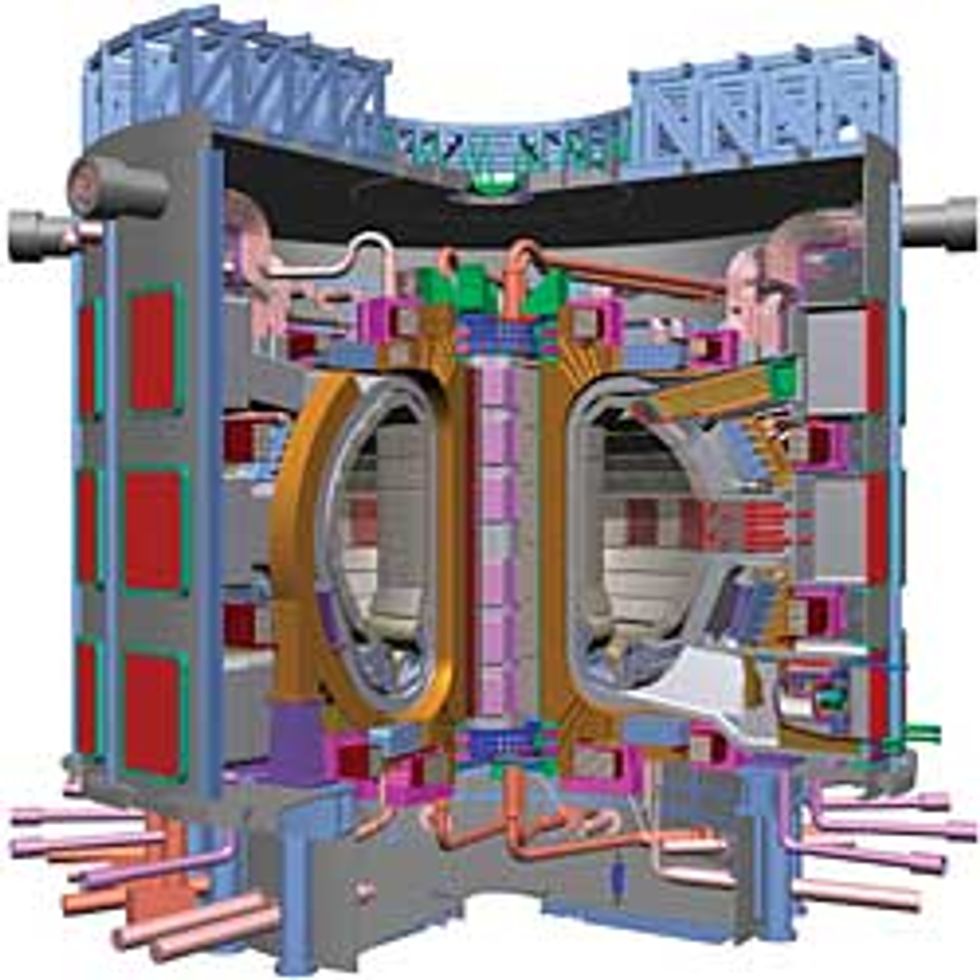If a fusion reactor could be made to work economically, the payoff would truly be a Holy Grail. The rub: enormous amounts of pressure and heat are required to make fusion happen, and even if the technical feat of creating self-sustaining fusion reactions can be accomplished in principle, there remain the challenges of achieving a net energy gain and, even tougher, a net economic gain.
So great are those challenges, in fact, that the prospect of building a commercially viable reactor has come to resemble an ever-receding mirage--a promise that is somehow always just 25-50 years ahead.
In fusion, hydrogen isotopes are made to combine to form helium, bringing an enormous energy yield with the release of neutrons and alpha particles. One way of doing this, called intertial confinement fusion, is to train giant lasers on pellets of hydrogen fuel. That's what's being done at Lawrence Livermore National Laboratory's National Ignition Facility in California, mainly to test and evaluate some of the processes that take place in thermonuclear weapons.
The favored approach for electricity generation, dubbed magnetic confinement, is to achieve compression and heating of the isotopes by means of powerful fields, usually in toroidal machines. It got its first big tests at the Joint European Torus, Abingdon, UK, and at the Princeton Plasma Physics Laboratory in New Jersey, where reactors momentarily demonstrated sustained reactions in the mid-1990s.
The next main event is to be the design and completion of ITER, the International Thermonuclear Experimental Reactor, an international collaboration in a US $5 billion plant to generate continuous self-sustaining reactions in a so-called burning plasma. ITER has suffered many vicissitudes since its conception more than a decade ago, including decisions by the U.S. government to drop out of and then rejoin the group. The U.S. Department of Energy has now declared ITER its highest priority among major new facilities and upgrades, but the project still awaits a final design and selection of a site.
No project of this scale gets adopted without a lot of politics. U.S. President George W. Bush decided to get back into ITER under considerable pressure from Britain's leader, Tony Blair, and evidently he backed a proposed site near Barcelona in return for Spain's support in the Iraq war. The European Union, meanwhile, has thrown its support to a site in southern France, at the Cadarache nuclear complex; the choice between that site and one in Japan was to have been made on 20 December in Washington, D.C.
